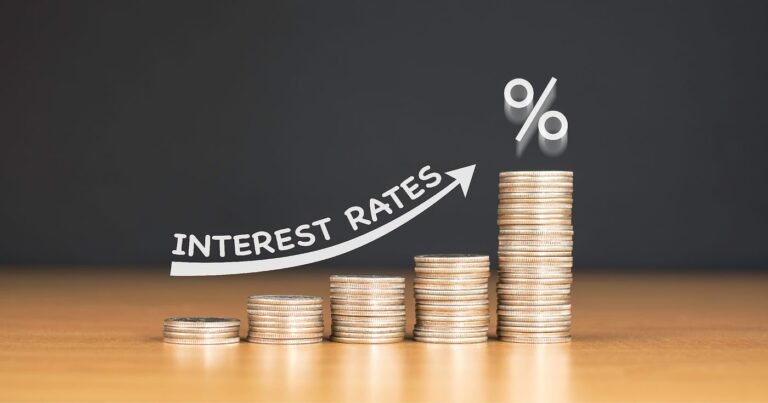Introduction: A Paradox in the Housing Market
In a move to stimulate the economy, the Federal Reserve recently announced a reduction in interest rates. Surprisingly, instead of falling, mortgage rates have climbed. This counterintuitive trend has left many prospective homebuyers and homeowners puzzled, questioning the dynamics between the Fed’s policies and mortgage rates.
This article delves into the reasons behind this unexpected rise in mortgage rates, exploring the complex interplay of economic factors and market sentiments that influence the housing market.
How Federal Reserve Rate Cuts Work
The Federal Reserve’s interest rate, often referred to as the federal funds rate, serves as a benchmark for various types of loans, including mortgages. Lowering this rate typically reduces borrowing costs, stimulating economic activity.
- Short-Term vs. Long-Term Rates:
The federal funds rate primarily influences short-term interest rates. Mortgage rates, however, are tied to long-term interest rates, such as those on 10-year Treasury bonds. - Expectation vs. Reality:
When the Fed announces a rate cut, markets often react based on expectations of future economic conditions, which may not align with the Fed’s intentions.
The Disconnect Between Mortgage Rates and Fed Cuts
Despite the Fed’s efforts to lower rates, mortgage rates often move in the opposite direction due to various factors:
- Treasury Yields Drive Mortgage Rates
- Mortgage rates are closely linked to yields on 10-year Treasury bonds. When Treasury yields rise, mortgage rates tend to follow suit.
- Recent increases in Treasury yields, driven by investor behavior and inflation concerns, have pushed mortgage rates higher.
- Inflation Expectations
- Inflation erodes the value of fixed-income investments like bonds. To compensate, investors demand higher yields, which indirectly raises mortgage rates.
- Concerns about persistent inflation, despite the Fed’s rate cut, have kept yields elevated.
- Market Sentiment
- Investor sentiment plays a crucial role in determining interest rates. Uncertainty about the economy’s trajectory can lead to fluctuations in mortgage rates, independent of the Fed’s actions.
The Role of the Housing Market in Rising Mortgage Rates
The housing market itself exerts significant influence on mortgage rates, and current conditions have contributed to the upward trend:
- High Demand for Homes:
- A combination of low housing inventory and high demand has driven up home prices, making mortgages more expensive.
- Rising home prices often lead to higher borrowing costs as lenders adjust rates to balance risk.
- Lender Caution:
- Lenders, wary of economic uncertainty, may set higher mortgage rates to protect against potential defaults.
- Recent volatility in financial markets has heightened caution among lenders, contributing to higher rates.
Global Economic Factors Impacting Mortgage Rates
Mortgage rates in the United States are not influenced solely by domestic factors. Global economic trends and geopolitical events also play a role:
- International Bond Markets:
- Global investors often turn to U.S. Treasury bonds as a safe haven during times of uncertainty. High demand for these bonds can lower yields, but if global economic conditions improve, bond demand may decline, pushing yields—and mortgage rates—higher.
- Geopolitical Tensions:
- Events such as trade conflicts or international crises can create volatility in financial markets, influencing mortgage rates.
- Central Bank Policies Worldwide:
- Actions by other central banks, such as the European Central Bank or Bank of Japan, can affect global capital flows and indirectly impact U.S. mortgage rates.
The Impact on Homebuyers and Homeowners
Rising mortgage rates have tangible effects on both prospective homebuyers and current homeowners.
- For Buyers:
- Higher rates increase monthly mortgage payments, reducing affordability for many households.
- Some buyers may postpone their plans, leading to reduced activity in the housing market.
- For Homeowners:
- Refinancing becomes less attractive as rates climb, limiting opportunities to reduce monthly payments.
- Existing homeowners may see slower equity growth if housing market activity declines.
Can the Fed Influence Mortgage Rates Directly?
While the Fed has significant control over monetary policy, its influence on mortgage rates is indirect and often limited:
- Quantitative Easing:
- In the past, the Fed has used quantitative easing (QE) to directly influence long-term interest rates by purchasing Treasury bonds and mortgage-backed securities (MBS).
- However, QE is not always on the table, especially during periods of high inflation.
- Communication and Forward Guidance:
- The Fed can shape market expectations through public statements about future policy actions, indirectly affecting mortgage rates.
What Homebuyers Should Do Amid Rising Mortgage Rates
For those navigating the housing market, the current environment calls for strategic decision-making:
- Lock In Rates Early:
- Buyers should consider locking in mortgage rates as early as possible to avoid potential increases.
- Explore Loan Options:
- Adjustable-rate mortgages (ARMs) may offer lower initial rates, though they come with long-term risks.
- Buyers should compare loan products to find the best fit for their financial situation.
- Focus on Affordability:
- Setting realistic budgets and avoiding overextending finances can help buyers manage higher borrowing costs.
- Stay Informed:
- Keeping an eye on economic trends and Fed announcements can provide insights into future rate movements.
The Long-Term Outlook for Mortgage Rates
Looking ahead, several factors will shape the trajectory of mortgage rates:
- Inflation Trends:
- If inflation moderates, Treasury yields and mortgage rates could stabilize or decline.
- Economic Recovery:
- A robust economic recovery could lead to higher rates as demand for credit increases.
- Fed Policy Adjustments:
- Future Fed actions, including potential rate hikes or cuts, will influence market dynamics.
- Housing Market Dynamics:
- Supply and demand imbalances in the housing market will continue to affect borrowing costs.
Conclusion: Understanding the Bigger Picture
The rise in mortgage rates despite the Federal Reserve’s rate cut underscores the complexity of financial markets and the myriad factors influencing interest rates. For homebuyers and homeowners, understanding these dynamics is key to making informed decisions.
While higher rates present challenges, they also highlight the importance of adapting strategies to navigate a changing economic landscape. By staying informed and proactive, individuals can better position themselves for success in the housing market, regardless of prevailing conditions.





Leave a Comment